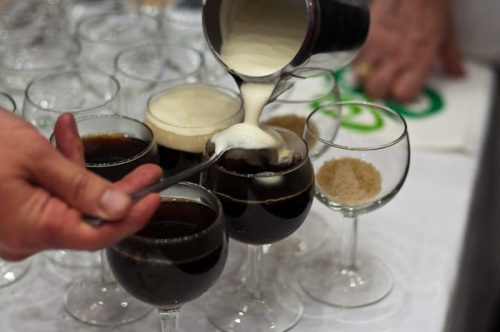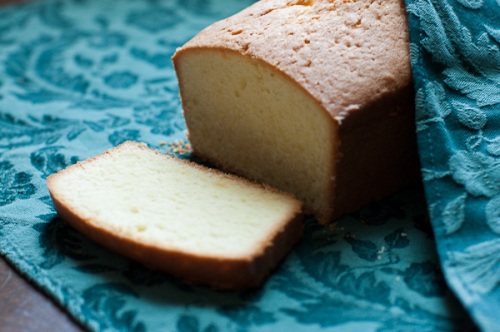Wild chestnut trees have flourished in southern Europe since the ancient Greeks brought them from Asia Minor and the Romans spread them throughout their empire. For thousands of years poor subsistence farmers in that part of the world extended their crops with wild foods like chestnuts. In addition to roasting or boiling them, chestnuts were dried and then ground into a flour which was mixed with wheat flour to help it go further. Before maize (corn) became a common crop in Europe in the 16th Century, Italian polenta was made with chestnut flour. When famine threatened, it was often chestnuts and other foraged foods which stood between the people and starvation.
There are many traditional foods in Italy and Corsica made with chestnut flour including a flat bread known as necci, and chestnut flour fritters called fritelli. In the late 1940s an anthropologist interviewed some elderly people in Corsica who said they had never eaten wheat bread, only bread made from chestnut flour. The villages in mountainous Corsica are isolated and at that time there was little trade with the mainland. Corsicans also call the chestnut tree arbre à pain or “the bread tree.”
I’ve made chestnut soup in the past and of course eaten roasted chestnuts while listening to Mel Torme, but to get in touch with the medieval food traditions of southern Europe I chose to make a Tuscan chestnut flour cake called castagnaccio. Many of the ingredients are forageable, it’s really easy to make, and as an extra bonus it is both vegan and gluten free.
Castagnaccio is very rich so you only need a small piece, especially after all that turkey. It has a deep, earthy flavor, punctuated by the sweet raisins and a slight bitterness from the rosemary. The cake’s consistency, and the fact that it is not overly sweet, reminded me of Asian desserts made with red bean paste.
I, for one, am grateful to be using the lowly chestnut to celebrate abundance at Thanksgiving, rather than as a stop-gap to prevent famine.
Castagnaccio
Vin Santo is an Italian dessert wine, if you can’t get it, use a dry sherry instead.
Chestnut flour can be found in Italian specialty stores where it may be labeled farina di castagne. You can also order it from Amazon.com
⅓ cup Vin Santo or dry Sherry
1½ ounces raisins
10 ounces chestnut flour
1½ ounces sugar
a large pinch of salt
1½ – 2 cups water
3 tablespoons olive oil
1 generous teaspoon chopped fresh rosemary
1 ounce pine nuts
Put the raisins in a small dish and pour the Vinsanto or sherry over them. Leave them to soak for at least 30 minutes.
Preheat your oven to 400F.
Grease an 8-inch round cake pan with 1 tablespoon of the olive oil.
Mix the chestnut flour, sugar, and salt together in a bowl. Gradually whisk in water until a batter with the consistency of pancake batter is formed. It should be pourable, but not too thin.
Pour the batter into the prepared cake pan, it should be about 1 inch thick. Drizzle the remaining 2 tablespoons of oil over the top of the cake. Bake for 15 minutes.
Remove the cake from the oven. Drain the raisins and squeeze as much liquid out of them as you can, then sprinkle the raisins over the top of the cake. Also sprinkle the chopped rosemary and the pine nuts over the top of the cake.
Return the cake to the oven for another 15-20 minutes, or until it is a dark brown color and the top is cracked like parched earth. The cake does not rise as chestnut flour contains no gluten.
Allow the cake to cool completely before turning it out onto a plate. Serve with a glass of Vin Santo or dry Sherry.




















